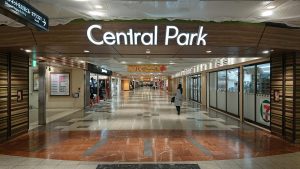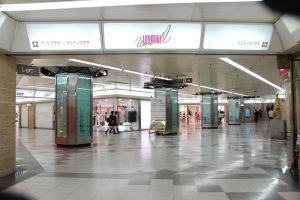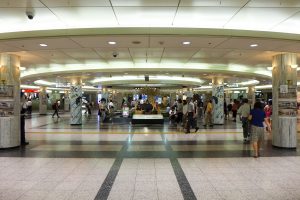May 26, 2021
Let’s Tour: Nagoya’s Underground Labyrinth
Nagoya has a deep and dark secret… Well a deep, but pretty well-lit secret, actually. Did you know that it is home to Japan’s oldest underground pedestrian passageway and shopping mall network? Underground shopping malls, or 地下街 (chikagai), are pretty common in the larger urban cities in Japan. They can provide a dry, comfortable, climate-controlled place for pedestrians to congregate and shop barrier-free without worrying about traffic, rain, winter snow, and summer heat. Nagoya is home to several subterranean spaces that span many areas around the Nagoya Station and Sakae/TV Tower area. When used in combination, it’s very possible to spend hours underground.
How it started: Sun Road

Back in the late 1950s, Nagoya was in the midst of a two-pronged building boom in the aftermath of World War II. The population was swelling due to new factories and offices being opened as Japan’s economy was radically industrialized, and Nagoya was becoming a hub for production. The JR and Meitetsu railroads served the area from the suburbs in a north-south fashion, and Nagoya needed an east-west rail line. The City of Nagoya Department of Transportation built the Higashiyama subway line’s initial segment between Nagoya station and Sakae in response to the need. As part of that construction, it was decided that instead of burying the tunnels with dirt and putting the street back on top, the city should build a continuous pedestrian arcade over the subway. Opened in phases, Mei-eki Sun Road is easily the most well-known city landmark that you can’t see from the surface since almost everyone living in the region has used the space, even if only to transfer from the subway to surface rail lines at Nagoya station briefly.
How it continued: SakaChika, Mori, Central Park
About 2 km east of Nagoya lies Nagoya’s main shopping and leisure area, the Sakae District. Like the Sun Road shopping area, underground building rights were sold to real estate developers when they expanded the Higashiyama and Meijo subway lines to create an underground shopping mall around the Otsu-Odori intersection, Hirokoji Dori, and northward along the Hisaya-odori park corridor. These resulting developments, SakaeChika, Mori, and Central Park, are all joined together, and unless you’re paying attention, you wouldn’t even notice the difference between the three zones. They form an underground link to Oasis21, Sunshine Sakae, Maruei, Skyrail, Mitsukoshi shops, and Sakae Station on the Higashiyama and Meijo subway lines as Sakae-Machi Station on the Meitetsu Seto line.
Next to Nagoya Station, the construction of the Sakura-Odori line bought another round of construction and two new underground malls: Unimall, which runs between Nagoya and Kokusai Center stations underneath Sakura-Odori and Esca underneath the western station plaza were the last ones to be completed around 1979. They are connected by one contiguous free passage under Nagoya station, one of Japan’s longest underground passageways.
Nagoya Station Area
Sakae District Area
How it’s going now
These underground arcades form the backbone of the Central Business District in Nagoya and are still considered part of how any new development is done in town. When the Dai Nagoya building was torn down and rebuilt in 2015, it was done to expand Sun Road’s concourse into the underground plaza of the building, just as Midland Square and Mode Gakuen had done. It’s also expected that the new Chuo Shinkansen underground station will add yet another section to the underground cobweb of passageways in the area.
Image “名駅地下街サンロード”, “Central Park” and “Gate Walk” via Wiki Commons, CC4.0





About the author